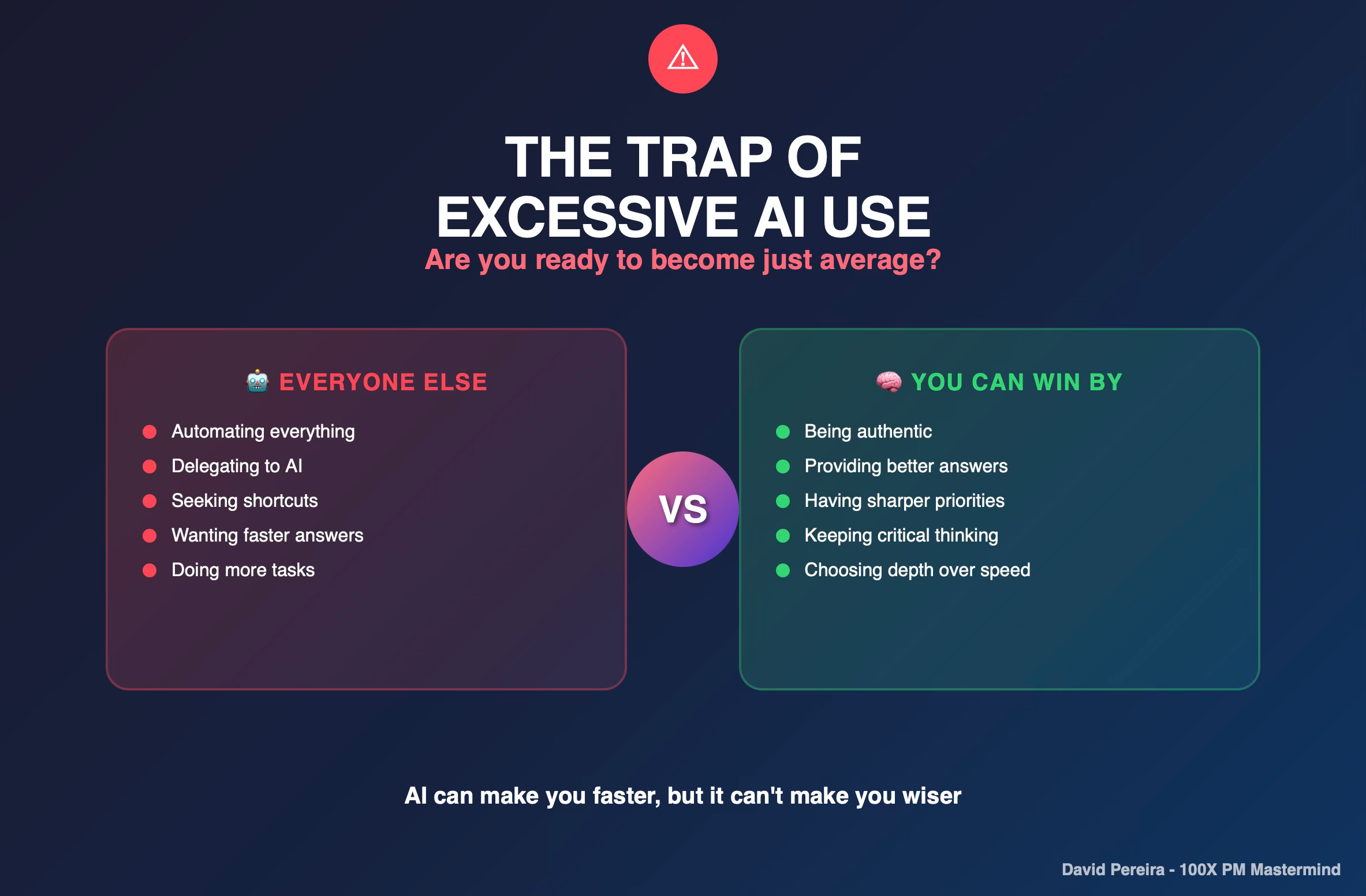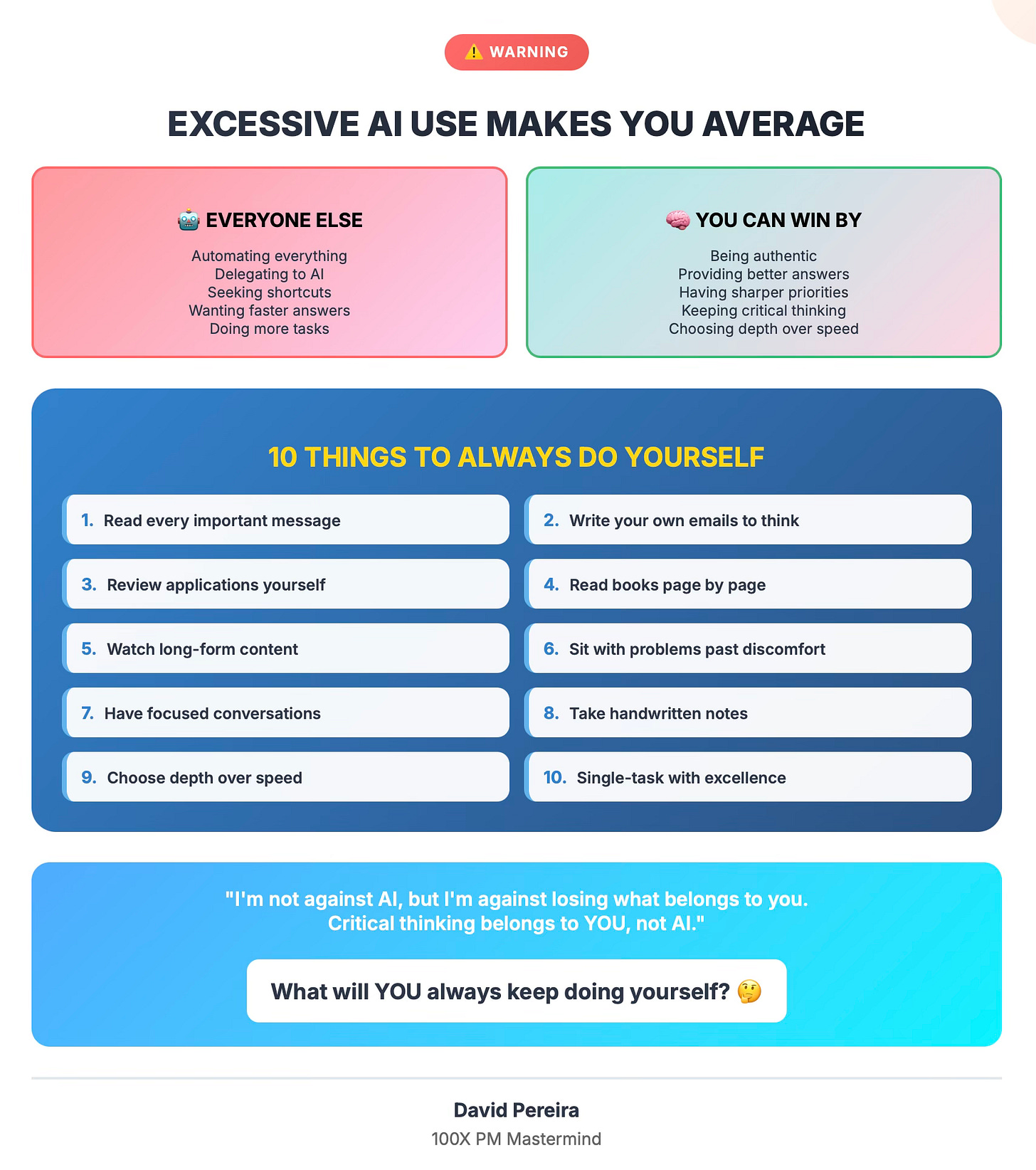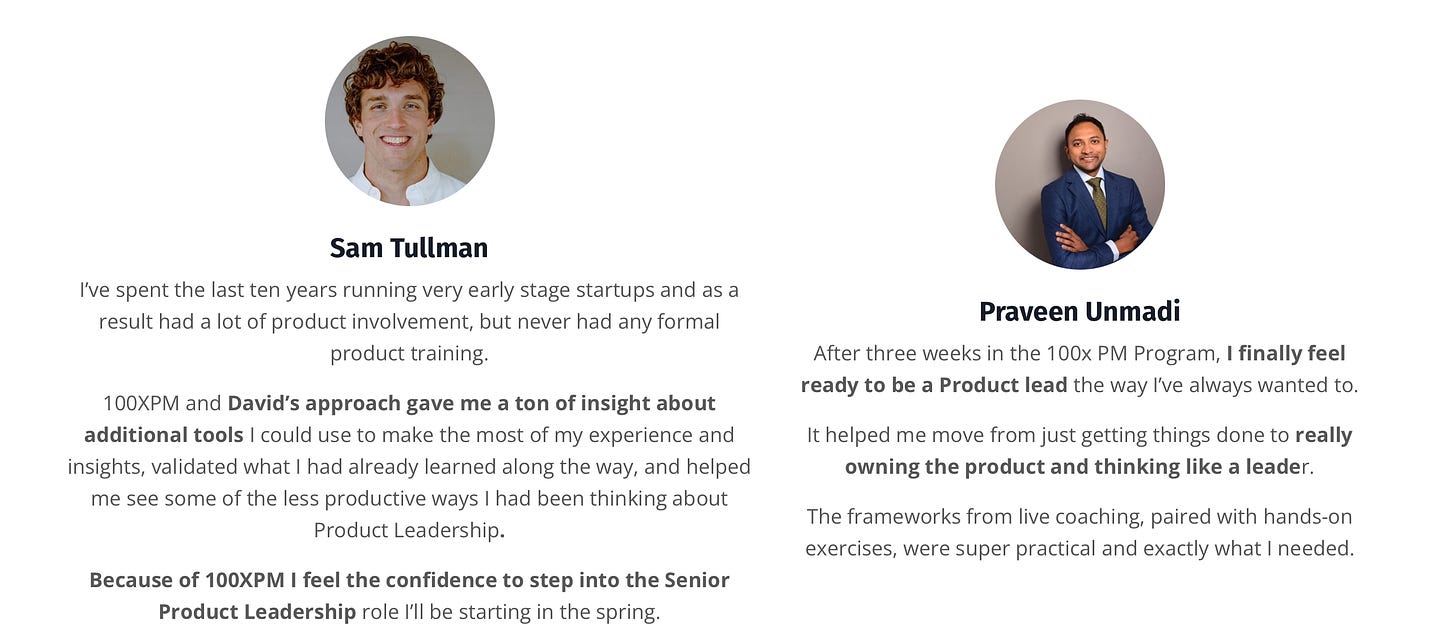The Trap of Excessive AI Use
Are we ready to become just average?
Excessive AI use is what will make you average, not better.
That may sound strange in a time when every second post on LinkedIn is about automating workflows, delegating decisions, and letting AI “think” for you.
But here’s the thing: the more we hand over our critical thinking to machines, the less we develop the skills that actually make us unique.
Don’t get me wrong. I’m not anti-AI.
I use it, I experiment with it, and I believe it can be a powerful tool. What I’m against is the blind embrace of “automate everything” that has taken over the professional world. It’s the mindset that if AI can do it, then you shouldn’t bother.
That mindset is dangerous.
Because here’s the truth: AI can make you faster, but it can’t make you wiser.
It can generate text, summarize documents, and suggest solutions, but it can’t replace the critical reflection that comes from slowing down, digging deep, and connecting dots that no machine can see.
And in product management, critical thinking is the skill you need to skyrocket your carrer. Shift that to AI at your own peril.
I’m writing this post because I’m disturbed by all the nonsense I’m seeing out there.
Delating prioritization to AI instead of taking the time to ponder options
Getting AI to write PRDs (or similar) instead of reflecting on what matters
Summarizing everything you can put into AI instead of slowing down to learn
Shifting research to AI instead of doing the necessary work to learn from reality
If you’re with me, let’s continue our chat. You will gain perspectives on what’s worth keeping for yourself, and what you may delegate.
If you think I’m nuts, proceed if you’re ready to get a bit pissed off :)
The Illusion of Shortcuts
When people long for shortcuts, you can stand out by being authentic.
When everyone wants faster answers, you can win with better answers.
When people want to do more, you can grow with sharper prioritization.
AI feeds our collective hunger for speed. But speed without direction just gets you lost faster. The question isn’t “How much can I automate?” but “What’s worth doing myself?”
If you’re in product, think about the activities where depth matters:
Understanding customers beyond what they say in surveys.
Reading between the lines of a business person’s request.
Balancing trade-offs that involve values, not just numbers.
Coaching your team through ambiguity.
Those are not activities you should delegate to AI.
They demand presence, empathy, and judgment. They demand you.
What Belongs to You
I’m not against AI, but I’m against losing what belongs to you.
Critical thinking belongs to you, not AI.
Decision-making in complex systems belongs to you.
Understanding human behavior belongs to you.
Challenging assumptions belongs to you.
The irony is this: the more people rush to outsource everything to AI, the more valuable it becomes to be the one who doesn’t.
That’s how you stand out.
Not by being faster at generating summaries, but by being better at connecting meaning.
Not by churning out more, but by focusing on what matters.
My “Old-Fashioned” Habits
Believe it or not, I still:
Read every DM. If you write, I care.
Write my own emails to slow down and think.
Review applications myself to truly understand candidates.
Read books page by page for real insight, not empty ones.
Watch long videos because nuance doesn’t fit into 30 seconds.
Sit with problems past the discomfort. Quick fixes rarely solve.
Have long, focused conversations. Presence builds connection.
Take handwritten notes to remember and reflect.
Choose depth over speed. That’s where meaning lives.
Single-task. One thing done well beats five half-done.
Some people call this outdated. I call it a competitive advantage.
Because while everyone else is racing to optimize for speed, I’m optimizing for clarity, meaning, and results. And funny enough, this has been my best year so far.
How to Leverage AI Without Losing Yourself
Here’s the paradox: AI is powerful, but only if you know what to keep for yourself.
For product managers, I’ve found AI works best in three ways:
Acceleration of low-value tasks
Drafting first versions of meeting notes, summaries, or templates.
Automating repetitive research (e.g., competitor feature lists).
Helping structure ideas that you later refine with your own judgment.
Exploration of alternatives
Generating multiple perspectives when you’re brainstorming.
Stress-testing your assumptions by asking “What would the opposite strategy look like?”
Using AI as a sparring partner, not a decision-maker.
Amplification of communication
Translating messages into different tones for different audiences.
Simplifying complex product updates for non-technical stakeholders.
Creating variations of the same content (presentations, emails, posts) to save time.
Accelerating Learning
Generating multiple product experiment options with different timeframes
Exploring dozens of assumptions you may not identify
Writing multiple problem statements from your experiment results
But here’s the rule I live by: AI can draft, but I decide.
The moment you let AI decide, you’ve crossed the line from leverage into abdication.
Untrapping Product Teams from the AI Hype
Teams fall into traps not because they’re lazy, but because they’re seduced by what looks easy. Right now, the easy trap is: “Let’s throw AI at everything.”
But if you’re serious about building products that matter, you need to know when to resist. Automating the wrong things creates shallow teams, shallow thinking, and shallow outcomes.
Here’s the mindset shift I’d argue for:
Use AI for leverage, not for abdication.
Delegate tasks, not ownership.
Accelerate what doesn’t need your unique brain, but never give up what does.
That balance is what keeps teams sharp, human, and valuable.
A Question for You
So here’s my invitation:
What’s one thing you’ll always keep doing yourself, no matter how much AI evolves?
Think about it. Protect it. That may be the very thing that keeps you and your team untrapped in the years to come.
If you enjoy these contrarian takes on product management, subscribe and share. The best way to untrap teams is to spread new perspectives.
Do You Want to Become the Product Leader that Execs Rely On?
Join our upcoming 100X PM Mastermind. We kick it off on the 20th of October.
Here’s what people say about it:
And this is our program to transform you into a product leader.
Have a lovely day, David.






